Apple Unveils the iPhone 12 and iPhone 12 mini with 5G, All-New Design, MagSafe and More
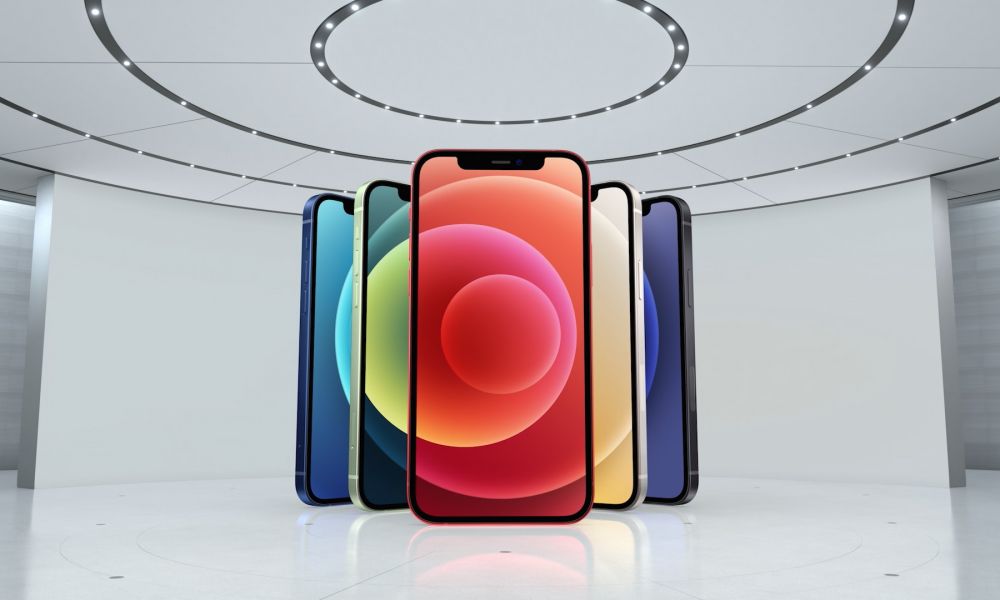 Credit: Apple
Credit: Apple
Today Apple took the wraps off its next major iPhone models, unveiling its latest 6.1-inch iPhone 12 — the latest entry in the lineup that began two years ago with the groundbreaking iPhone XR, and the direct successor to last year's iPhone 11.
Although a very active rumour mill has made this year's iPhones one of the worst-kept secrets in Apple history, the presentation of the new models was still a thing to behold, and Apple did manage to offer up a few smaller surprises nonetheless. Read on for everything that's new in the iPhone 12.
New Design
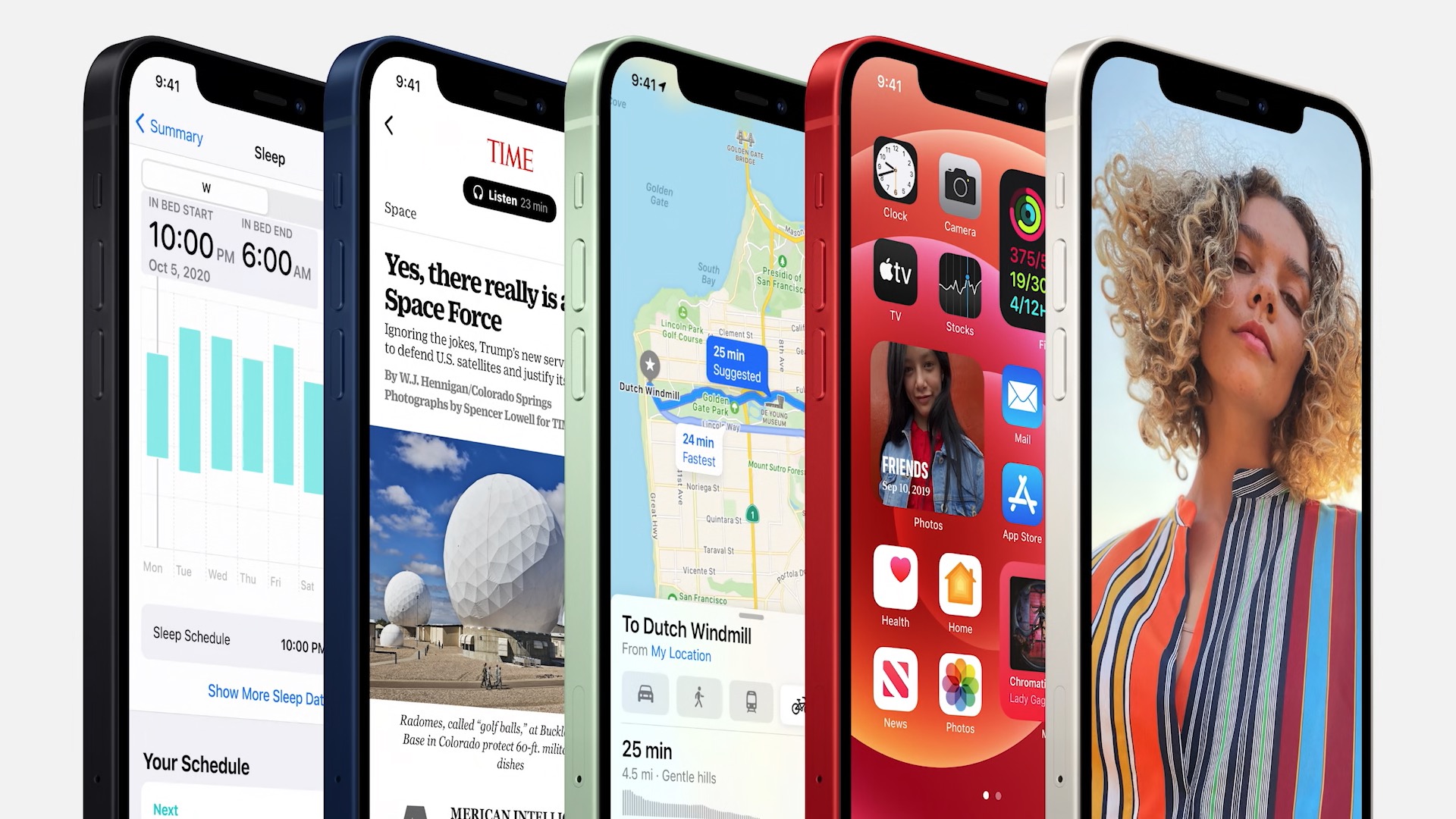
As predicted, Apple has shifted this year's iPhone lineup into a more square, flat-edged design. Although it's the first major design change for the iPhone since the iPhone 6 landed back in 2014, it actually hearkens back to the older design language of the iPhone 4 to the iPhone 5s era, and of course matches what Apple did with the iPad Pro back in 2018.
There's a practical aspect to the design change as well, however, since not only has it allowed Apple to pack more technologies into a smaller form factor, since it no longer has to worry about the space constraints of rounded edges, but it also provides the ability to optimize the design for 5G technologies.
In fact, it's probably no coincidence that Apple has returned to the concept of using the outside aluminum frame to accentuate the internal 5G antennas since that's pretty much exactly what it did with the iPhone 4 back in 2010. It's actually a good idea, and we're confident that Apple has advanced its antennas engineering skills over the past decade so that we won't have a repeat of the "Antennagate" controversy of that era.
The end result, however is that the iPhone 12 manages to reduce the display borders, and Apple says it's 11 percent thinner, 15 percent smaller, and 16 percent lighter than the iPhone 11. The new iPhone 12 models will also be available in five colours: Black, White, (PRODUCT)RED, green, and blue.
Super Retina XDR OLED Displays
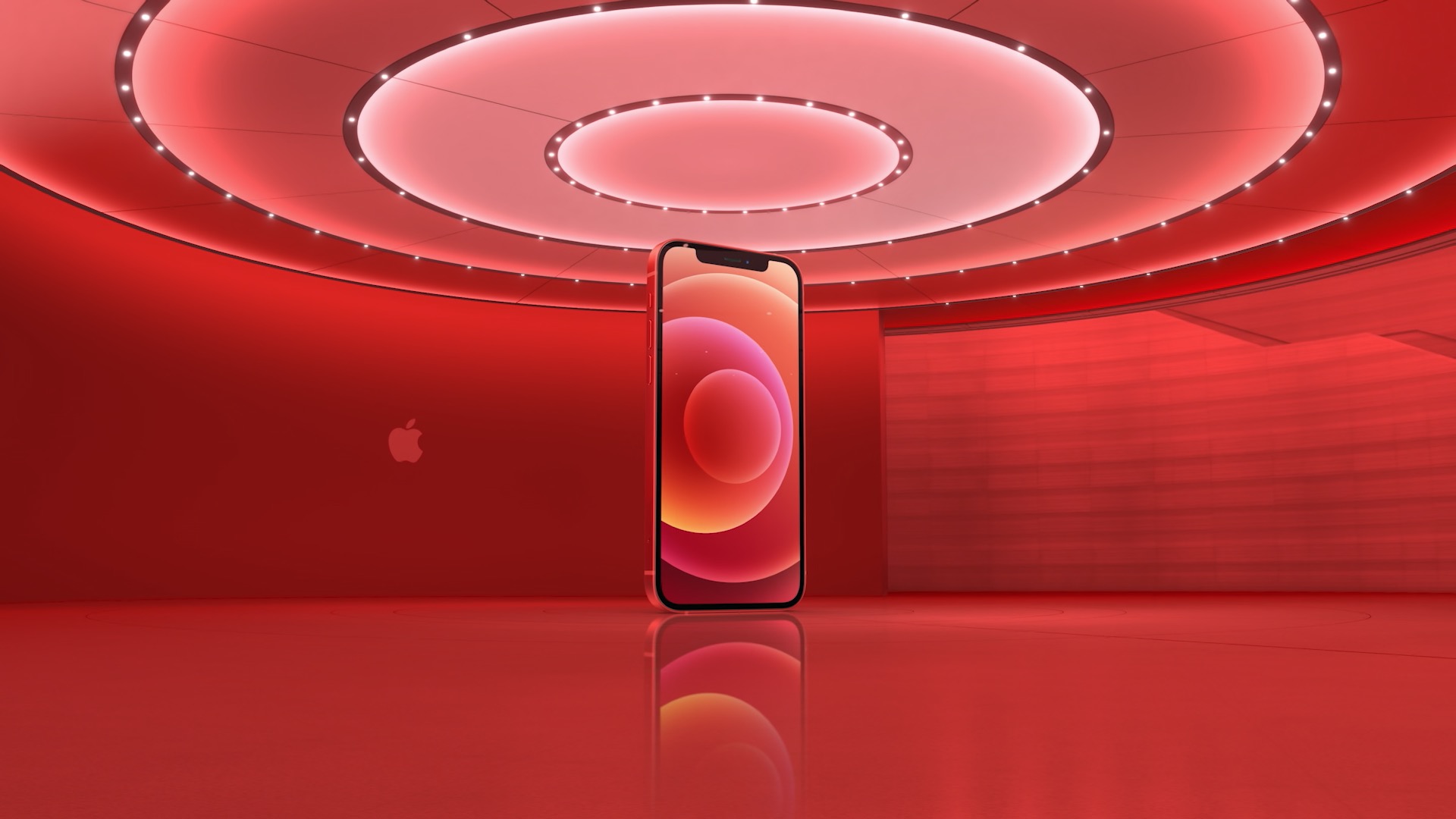
That said, there's more to the reduced display borders than just the change to a flat-edged design; Apple's switch to using OLED displays in its entry-level iPhone lineup undoubtedly played a big part in this as well, since with the advanced engineering Apple put into its Liquid Retina LCD display for the iPhone XR and iPhone 11, it still couldn't match the much more edge-to-edge display of the flagship OLED models.
This year, however, Apple has gone all-in on OLED across its entire lineup, bringing its Super Retina XDR display to the standard iPhone 12 models. While the specs won't be a huge surprise to iPhone 11 Pro users, it does mean that those opting for the more affordable model will get the same 2,000,000:1 contrast ratio, 458ppi pixel density, and 1200-nit peak brightness, as well as support for HDR video formats such as Dolby Vision and HDR 10.
Ceramic Shield
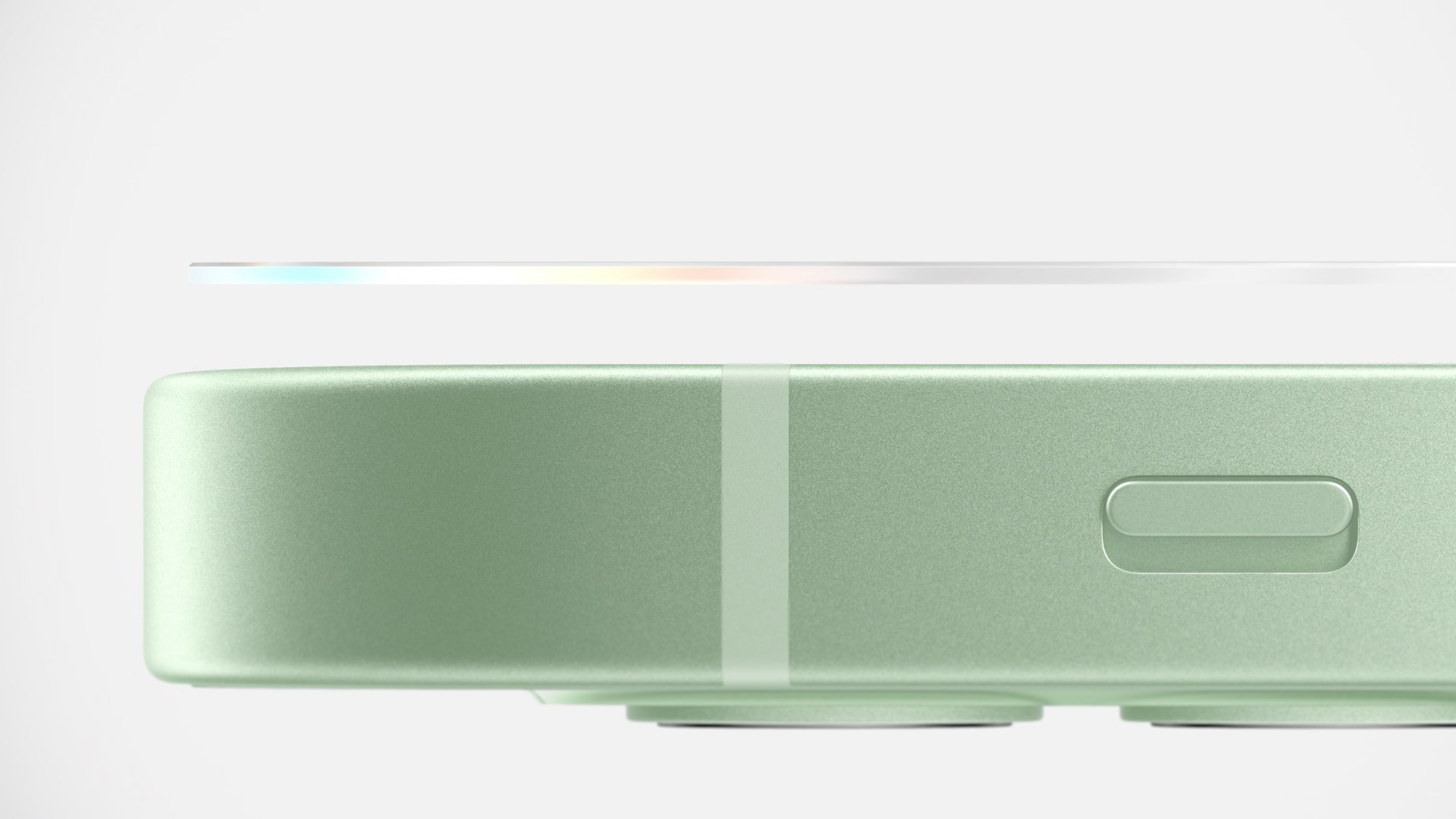
Apple has usually been a bit cagey about the glass that it uses in its iPhones, but this year it clearly has a bit more to boast about.
While analysts have speculated for many years that Apple used a variation on Corning's Gorilla Glass, the closest admission we've ever heard from Apple is that it does in fact work with Corning, and it confirmed that during today's event by sharing that Apple's material design engineers had actually collaborated with Corning's team to produce an entirely new cover glass that will provide four times better drop performance than the iPhone 11, which used glass that was already considered to be the toughest in the industry.
Dubbed "Ceramic Shield," the new glass is better than Corning's newest Gorilla Glass 6, and was developed using a high-temperature crystallization process that involved growing nano-ceramic crystals within the glass matrix.
We'll have to wait until folks get their hands on the new iPhones to see the investable collection of drop tests that will surely follow, but for the most part the iPhone has always fared reasonably well against the competition in this area.
5G
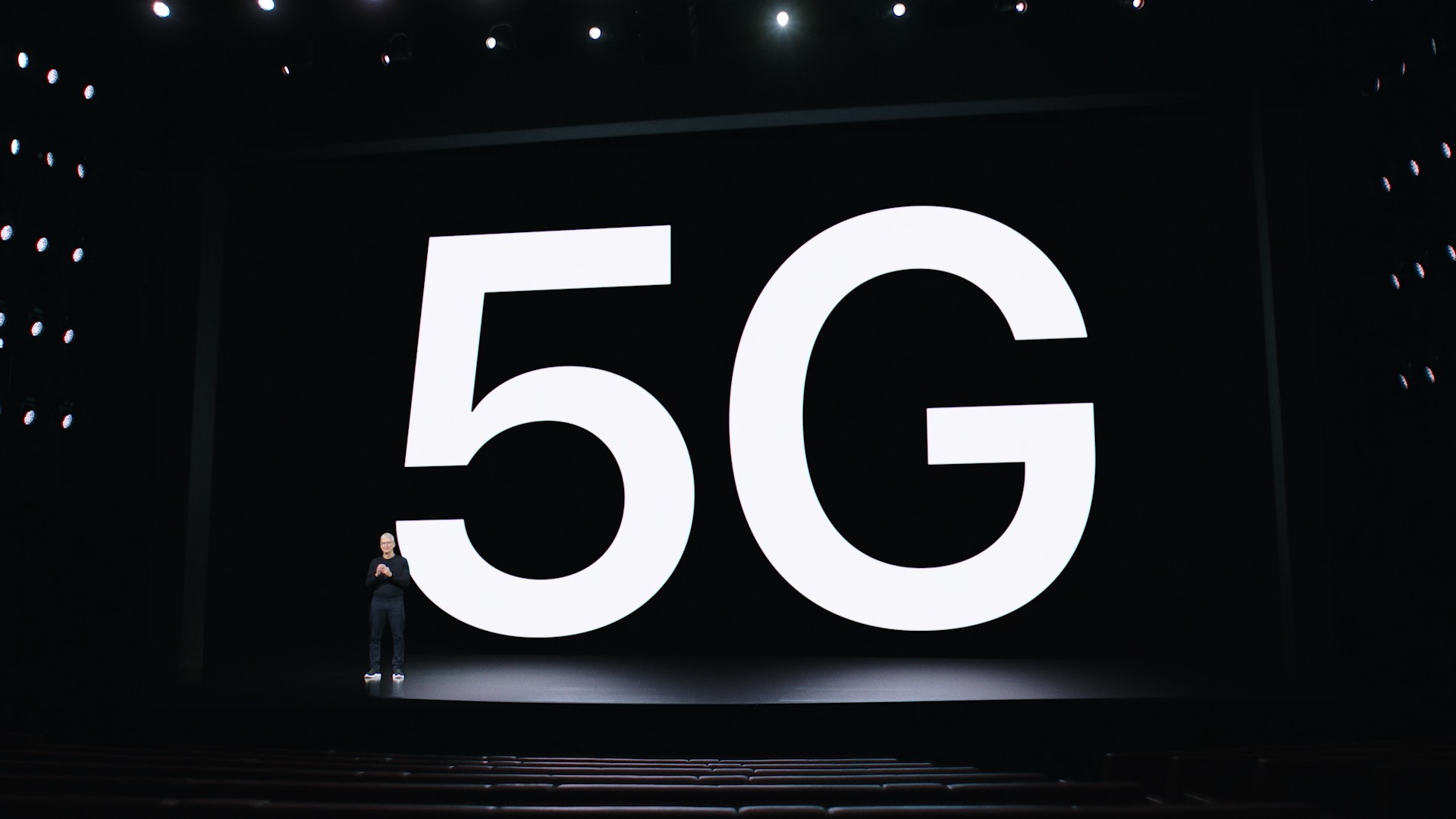
There wasn't much question that this year's iPhone lineup would include a full collection of 5G-capable models, and Apple didn't disappoint in this regard, but in the process it also subtly offered a few clues as to exactly what flavour of 5G models will be available.
The big question mark wasn't whether 5G was coming to the iPhone 12, but rather whether Apple every model would also support the faster mmWave 5G, since analysts and leakers were somewhat divided on that possibility.
Although Apple hasn't quite said it outright, the introduction of 5G technology to the iPhone by none other than Verizon's CEO followed by Tim Cook's emphasis that 5G will be coming to all models pretty much guarantees that mmWave models will be available in the U.S. for Verizon customers, at least. Verizon calls this its "5G Ultra Wideband" network, but at the end of the day this is just its own branding for what is the higher-frequency mmWave 5G.
When presenting the 5G features for the iPhone 12, Arun Mathias, Apple's VP of Wireless Software Technologies, also basically hinted at this as well, particularly when he also added that the iPhone 12 will offer "the most 5G bands of any smartphone" and there work in more places than any other smartphone.
Speaking directly from Apple's radio testing chamber, Mathias went on to explain how Apple designed its own custom 5G antennas and radio components, as well as optimizing every layer of the iOS frameworks to maximize battery efficiency. Apple collaborated and tested 5G with over 100 carriers in more than 30 regions to develop the 5G iPhone, noting that under ideal conditions it was able to achieve speeds of up to 3.5Gbps, while also adding that on Verizon's 5G mmWave network the iPhone 12 could reach 4.0Gbps speeds — again under ideal conditions, of course, although apparently 1Gbps speeds were typical
As predicted in a late-breaking leak last week, Apple is also adding a Smart Data Mode feature that will automatically fall back to using LTE when 5G speeds aren't required. This will maximize battery life, since there's no getting away from the fact that 5G requires more power right now than 4G/LTE does.
A14 Chip
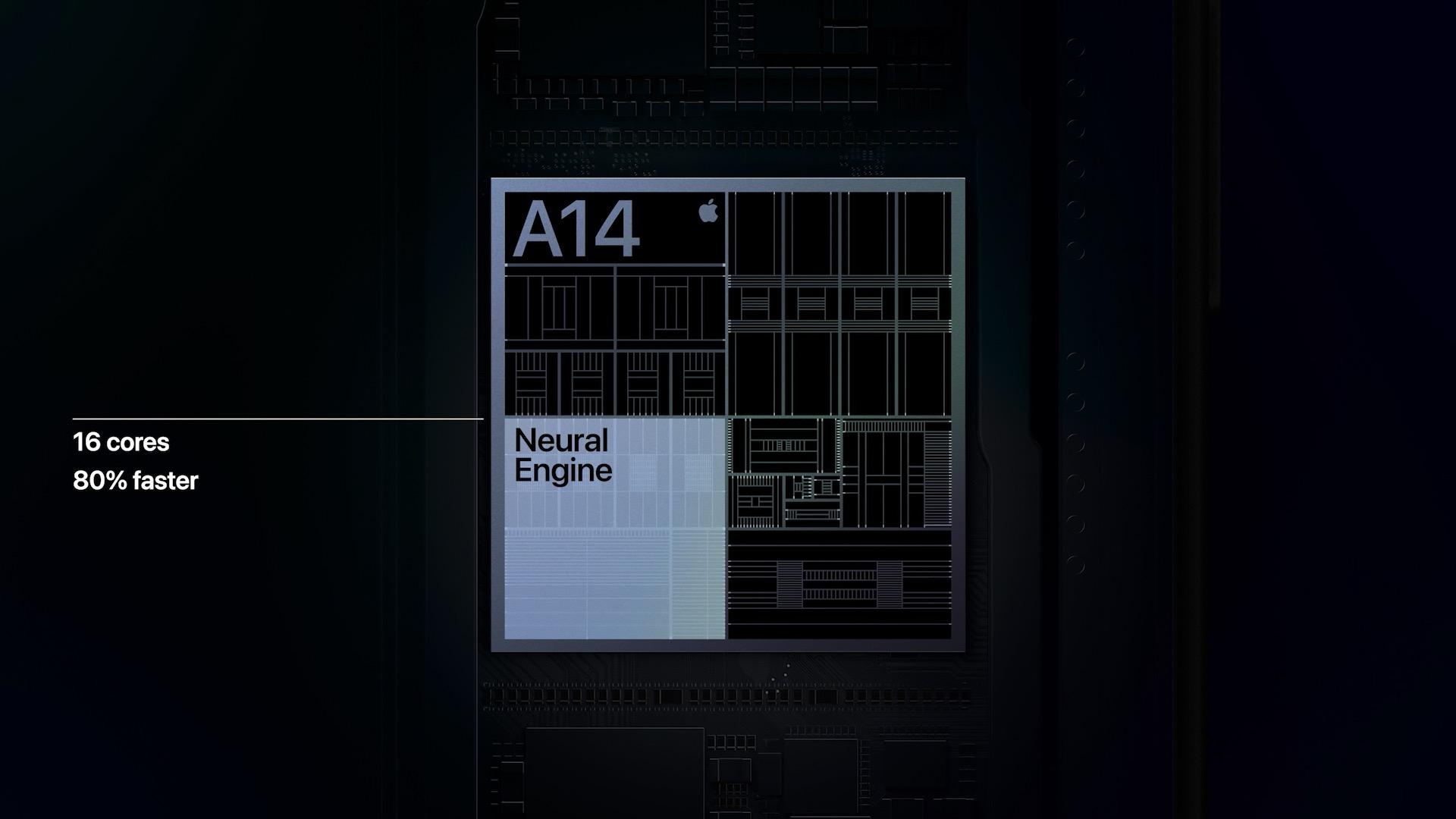
This year Apple took the unusual step of unveiling its newest SoC before its iPhone event, since the newest iPad Air also includes the exact same A14 chip. However, Apple clearly didn't want to say too much about it last month in order to save the real news for the iPhone 12 launch.
At today's event, however, Apple pulled out all of the stops, going into the usual level of detail on the A14 Bionic, noting that it's the first smartphone chip built on new 5nm process technology, which allows them to cram in 11.8 billion transistors — a 40 percent increase over last year's A13.
Since no iPad ever included an A13 chip, Apple only compared the A14's performance specs at last month's event to the A12-series chips that had come before, and of course these were very impressive, but the A14 still represents a huge leap over what the A13 is capable of, with a performance boost that now makes it 50% faster in both core processing and graphics processing than any other smartphone chip, including the A13, along with machine learning computations that run 70 percent faster, and the Neural Engine getting an 80 percent boost over the A13's.
As Hope Giles, Apple's VP of Engineering Program Management for Hardware Technologies explained, Apple has accomplished this by increasing the Neural Engine to 16 cores, which results in the ability for it to now process 11 trillion operations per second. The main SoC uses a 6-core CPU with the usual two high-performance and four high-efficiency cores, along with a 4-core GPU that's now the fastest GPU in any smartphone.
Gaming
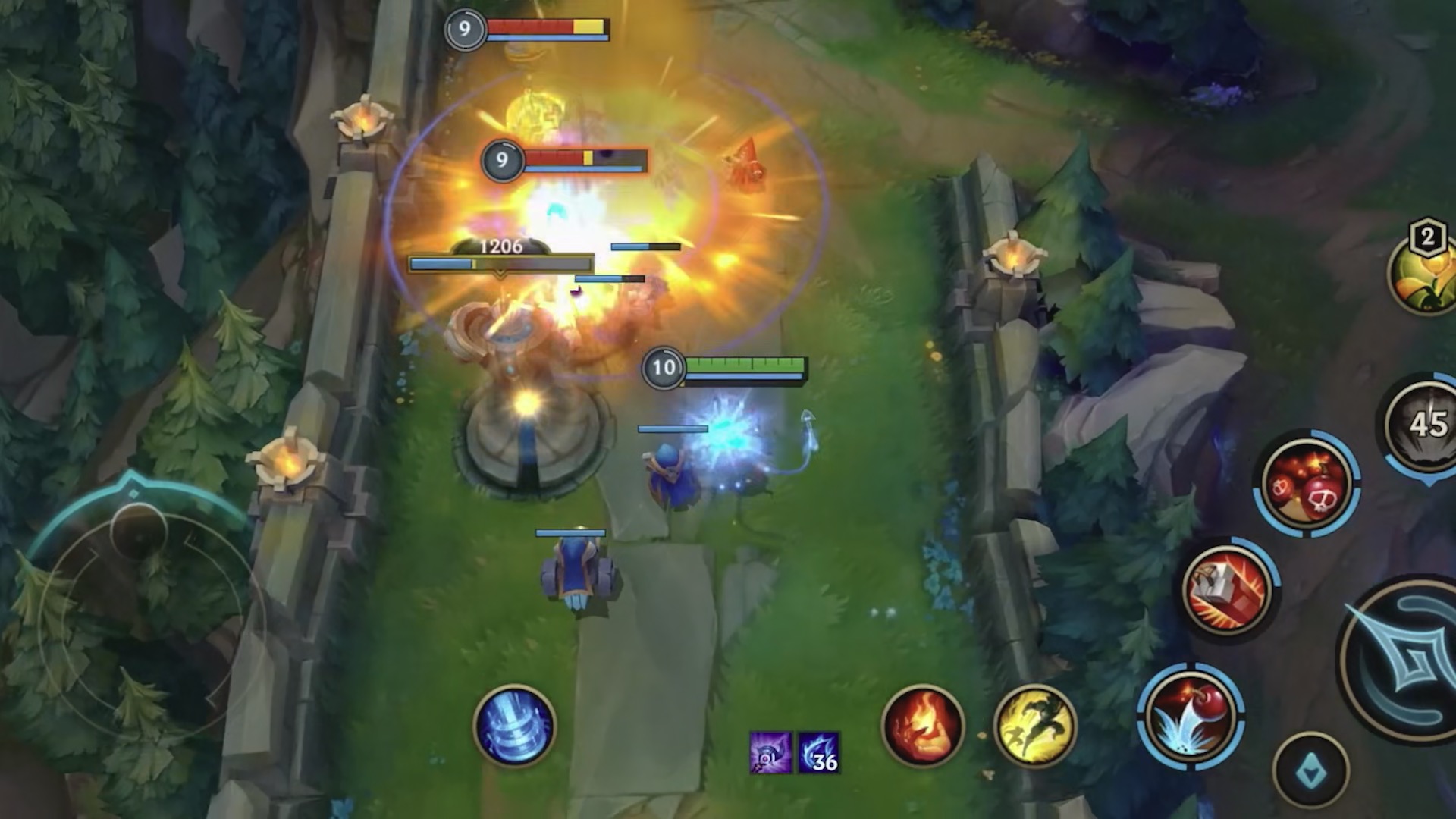
To show off what the new A14 chip and 5G capabilities of the iPhone 12 can do, Apple invited Michael Chow, the Executive Producer of Riot Games, to present the news that League of Legends will be coming to the iPhone later this year.
Billed by Apple as the most popular, most played, and most viewed game in the world — a game that revolutionized e-sports — League of Legends is a console and PC-level game that will be empowered by what Chow describes as a "huge leap forward in gaming" on the iPhone 12, thanks to the A14 Bionic chip and 5G technology.
The new iPhone game, League of Legends Wild Rift, will not only be able to take advantage of Apple's new powerful chip to allow for "off the charts GPU performance" for incredibly fast and detailed rendering of complex graphics, but thanks to the low latency of 5G technology, gamers will be able to jump on and play like a pro from anywhere they happen to be. Chow adds that it's not just about gameplay either, as fast 5G speeds will allow players to instantly download new content while on the go.
Cameras
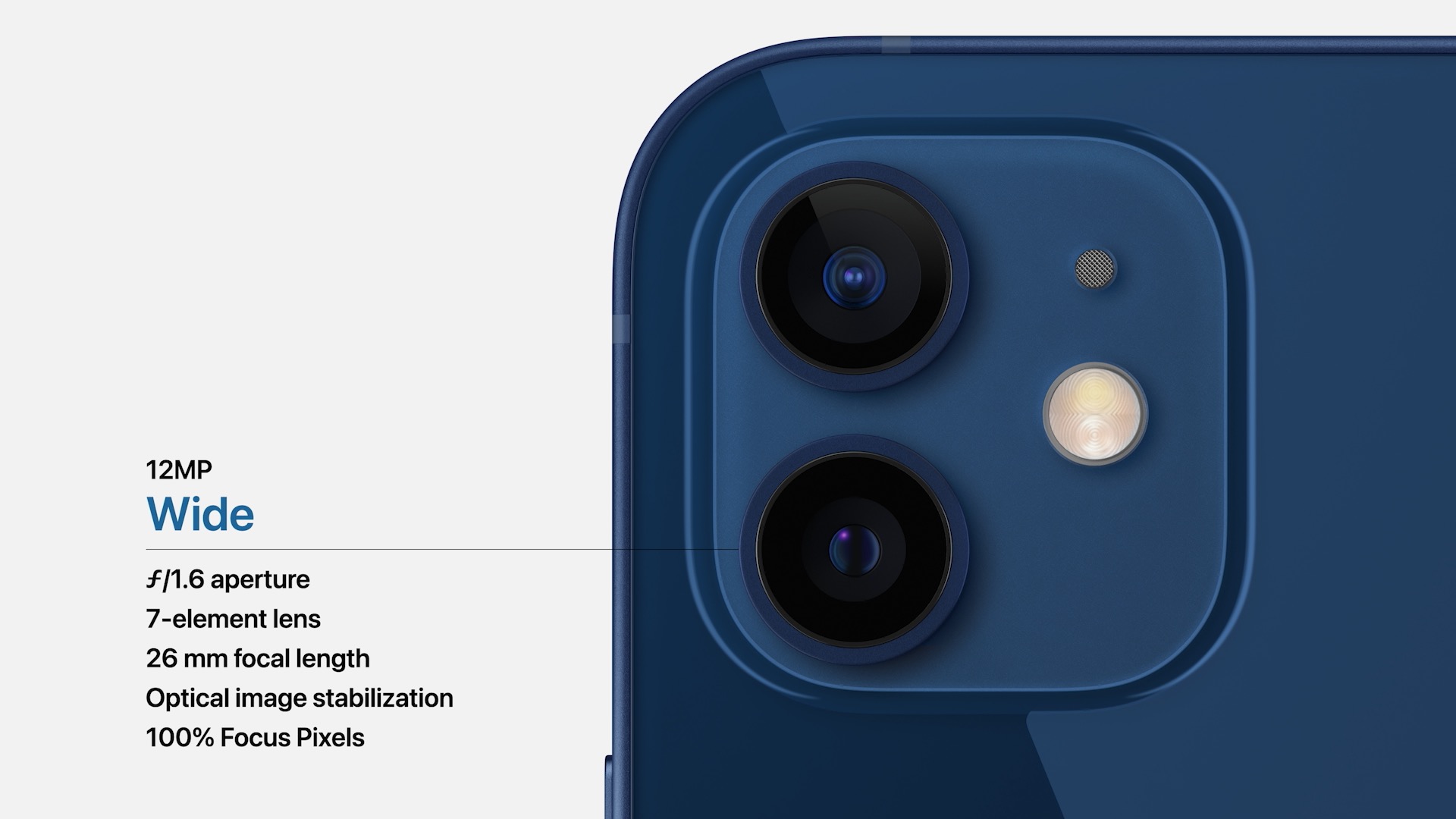
On the surface, the iPhone 12 may appear to share the same dual-camera system as the iPhone 11, but Apple has made some pretty decent improvements under the hood.
While you're still dealing with only two cameras — an ultra-wide angle and wide angle — Apple has improved the main wide camera with an f/1.6 aperture and a new seven-element lens. The result is an improvement by 20 percent in low light performance thanks to the wider aperture. The ultra-wide angle camera, appears to have stuck with the same f/2.4 five-element lens as before, however.
That said, with modern iPhones, the real power for capturing images doesn't lie solely in the camera specs, but in Apple's computational photography features, and with the A14 Bionic, Apple has been able to take this up a notch in several key areas.
Both Smart HDR and Night Mode have been improved to provide greater levels of detail through deeper analysis of photos, plus the wider aperture on the main lens allows for more light to be captured, which will naturally improve Night Mode photos even further.
More significantly, however, is that Apple has expanded Night Mode to all three cameras on the iPhone 12 — both rear cameras and the front TrueDepth camera, meaning you'll now be able to capture Night Mode selfies. On the video side, Apple has also added Night Mode Time-lapse video.
MagSafe
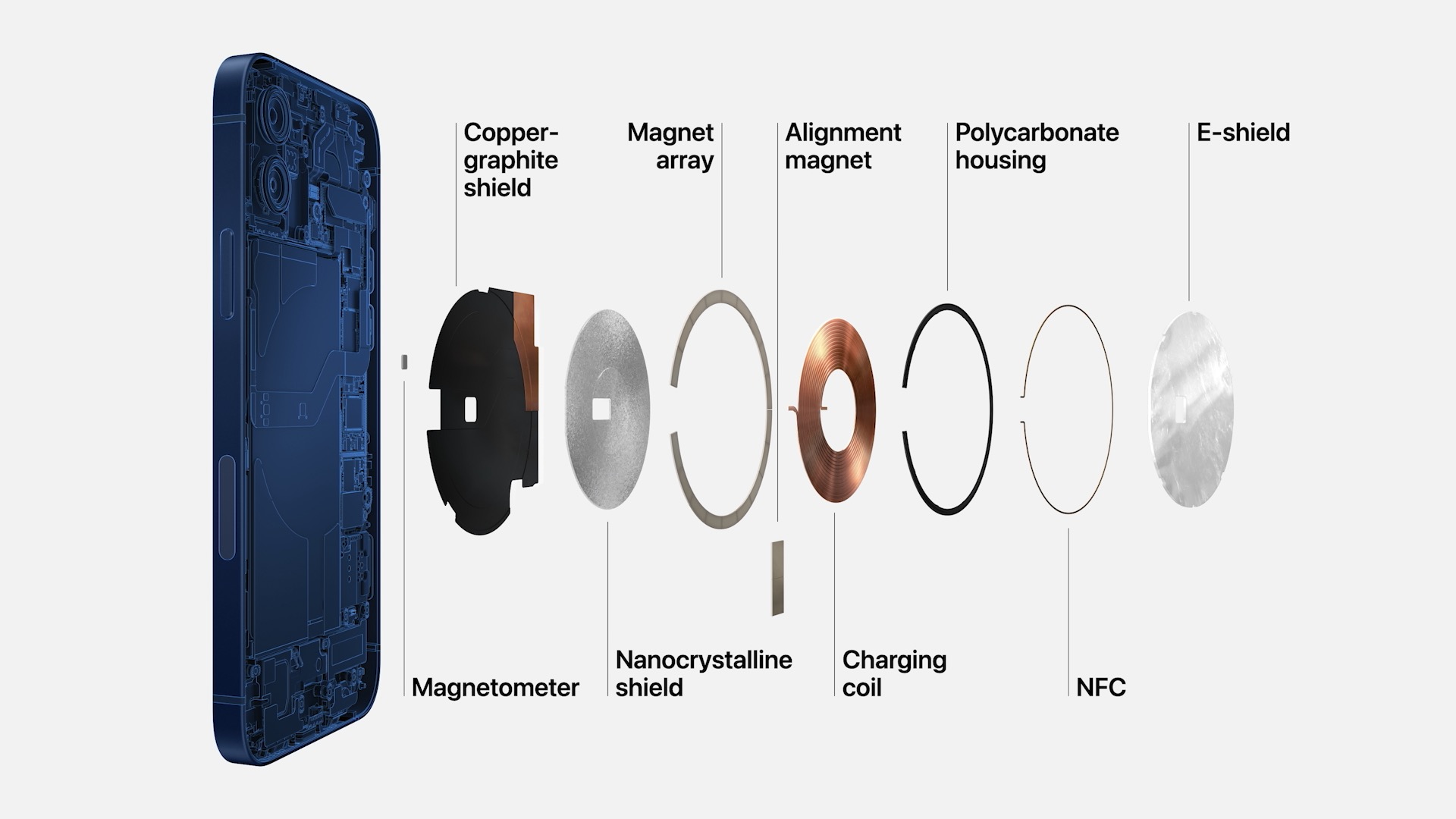
One of the few surprises in this year's announcement was Apple's debut of an entirely new magnetic charging standard. While we heard a few days ago that Apple was going to be resurrecting the "MagSafe" name for magnetic charging accessories, it was a bit more of a surprise to discover that the new magnetic ring that's now baked into this year's iPhones will actually be used for a whole ecosystem of magnetically-attached accessories, including not only chargers but also cases and wallets and whatever else third parties can think of.
We kind of saw this coming with the Magic Keyboard for the iPad Pro, but in the case of the iPhone 12 Apple has taken it a big step further, since wireless charging is a factor as well, and the MagSafe system is about a lot more than just magnets and Qi charging — it also allows the iPhone to identify what types of accessories are attached, so that it can determine when to charge, or even do things like automatically lock the iPhone and display a smaller clock on the screen to be seen through a slit in the front of a case.
Even more significantly, by being able to guarantee proper alignment with a wireless charger, Apple has enabled 15-watt wireless charging capabilities in the iPhone 12, effectively doubling the wireless charging speeds.
Charger and EarPods Not Included
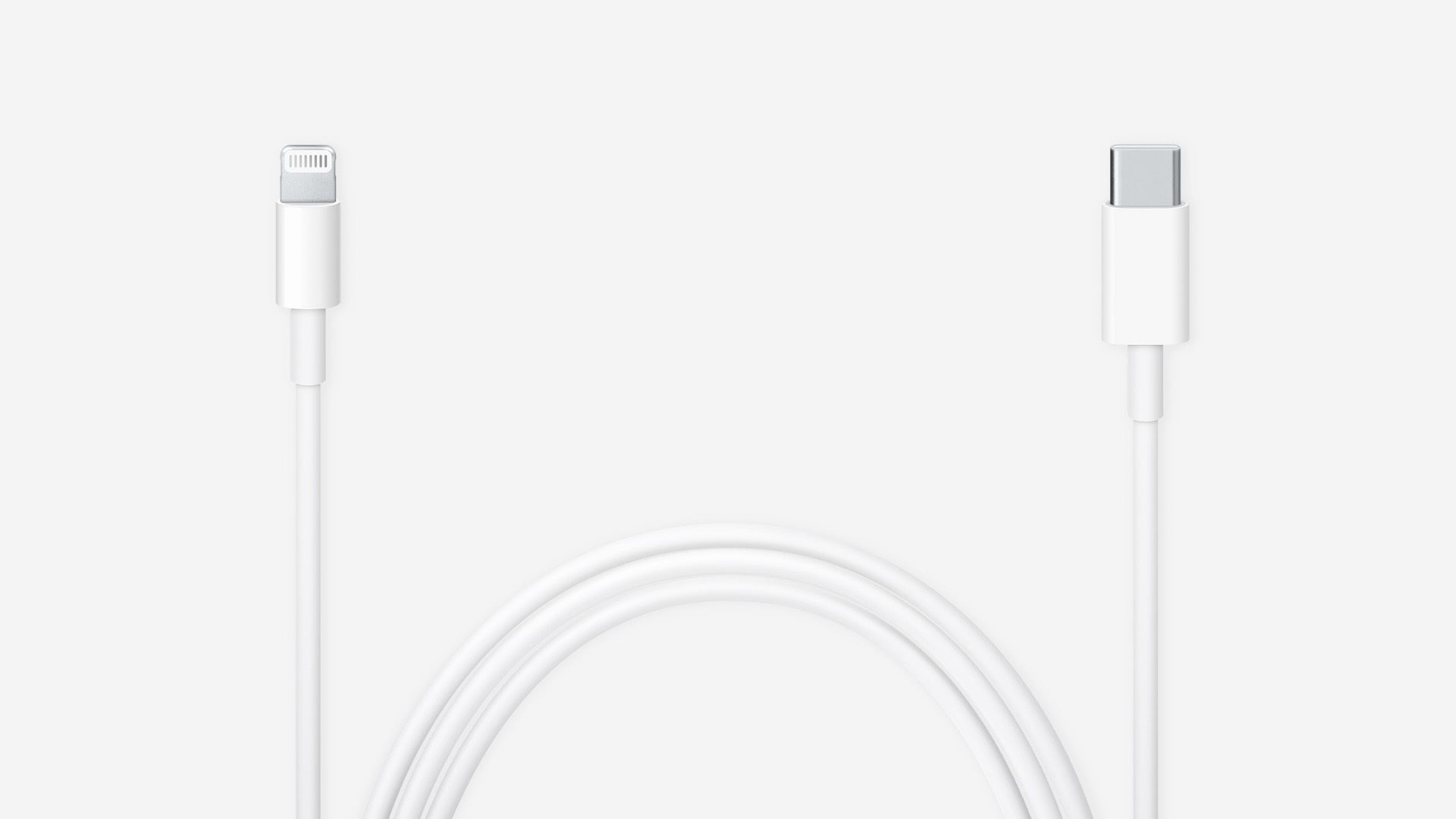
We've been hearing rumours for a while that Apple was going to be removing bundled accessories from its iPhones this year — specifically charger and EarPods — and the company basically tipped its hand in this regard last month when it announced that it would be doing this with the Apple Watch.
So when Apple's VP of Environment, Policy, and Social Initiatives, Lisa Jackson, took the virtual stage, we pretty much knew what was coming, although she did a good job of laying out exactly why Apple was making this decision.
In fact, Jackson began by talking about Apple's goal to have zero environmental impact by 2030. Having already achieved a 100% carbon neutral position in its actual operations, the next logical step is to make sure that it can also achieve this in its product chain.
According to Jackson, there are already over two billion charging adapters out in the world made by Apple alone, not to mention the many many billions more from third-party manufacturers. Combined with the fact that many Apple device users choose to purchase wireless earphones, or even just different wired earphones, removing the charger and the EarPods from each iPhone box will significantly reduce Apple's carbon footprint.
But that's not all, since of course this allows Apple to reduce the weight and size of each iPhone box, reducing shipping costs. Based on our own math earlier this year, the weight reduction of each iPhone box alone would work out to the equivalent of ten Boeing 747’s or about half the displacement of an Arleigh Burke class destroyer, but Jackson put it in even more realistic terms by noting that the ability to put 70% more products into each shipment will actually cut two million metric tons of carbon emissions annually — or the equivalent of removing 450,000 cars per year from the roads.
In our opinion, it's a reasonable price to pay for the environment, as Apple will still sell chargers and EarPods for those who actually need one, but they'll avoid the waste of giving away tens of millions of accessories to users who will either discard them or simply never even take them out of the box in the first place.
The iPhone 12 will still include a charging cable; it's going to be a USB-C to Lightning cable to enable fast charging, however, and customers will simply have to provide their own USB-C adapters if they don't already have one.
iPhone 12 mini
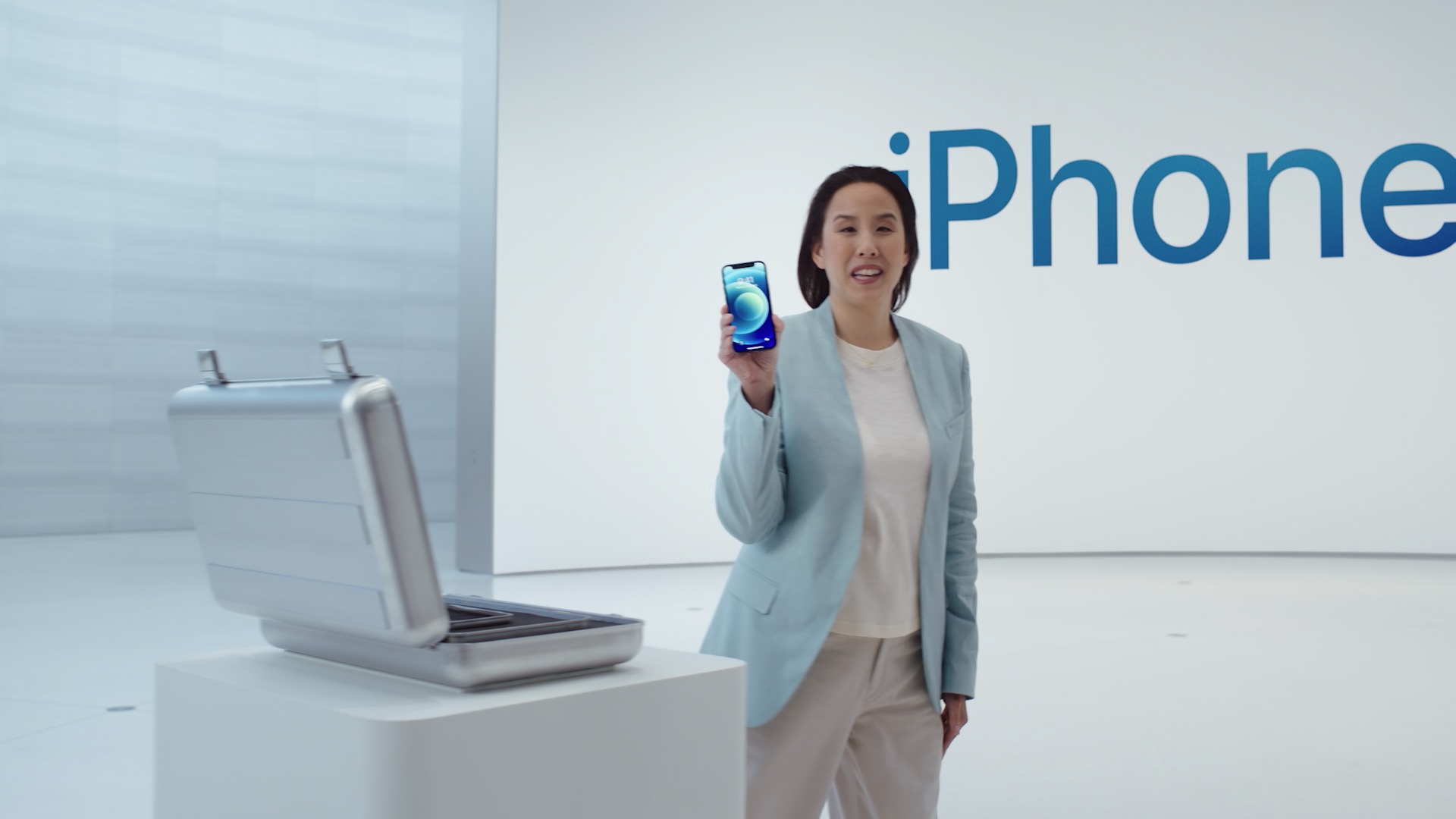
We all knew that a smaller iPhone 12 was coming, however this didn't stop Kaiann Drance, Apple's VP of iPhone Product Marketing, from deciding to make a show of unveiling the new 5.4-inch iPhone 12 mini, with a James Bond style unveiling, theme music and all.
Drance illustrated how it's smaller and lighter than the 4.7-inch iPhone 8 (an interesting choice of example as opposed to the identically-sized 2020 iPhone SE), while featuring a larger 5.4-inch display. Notably, there were no comparisons made to the 2016 iPhone SE or iPhone 5s, although that may have only been because of the age of those particular models.
Despite its smaller size, however, the iPhone 12 mini won't be skimping on features, and in fact will be identical to its larger sibling in every way except for the size. The addition of 5G support, however, means that Apple now has "The smallest, thinnest, and lightest 5G iPhone in the world."
Pricing and Availability
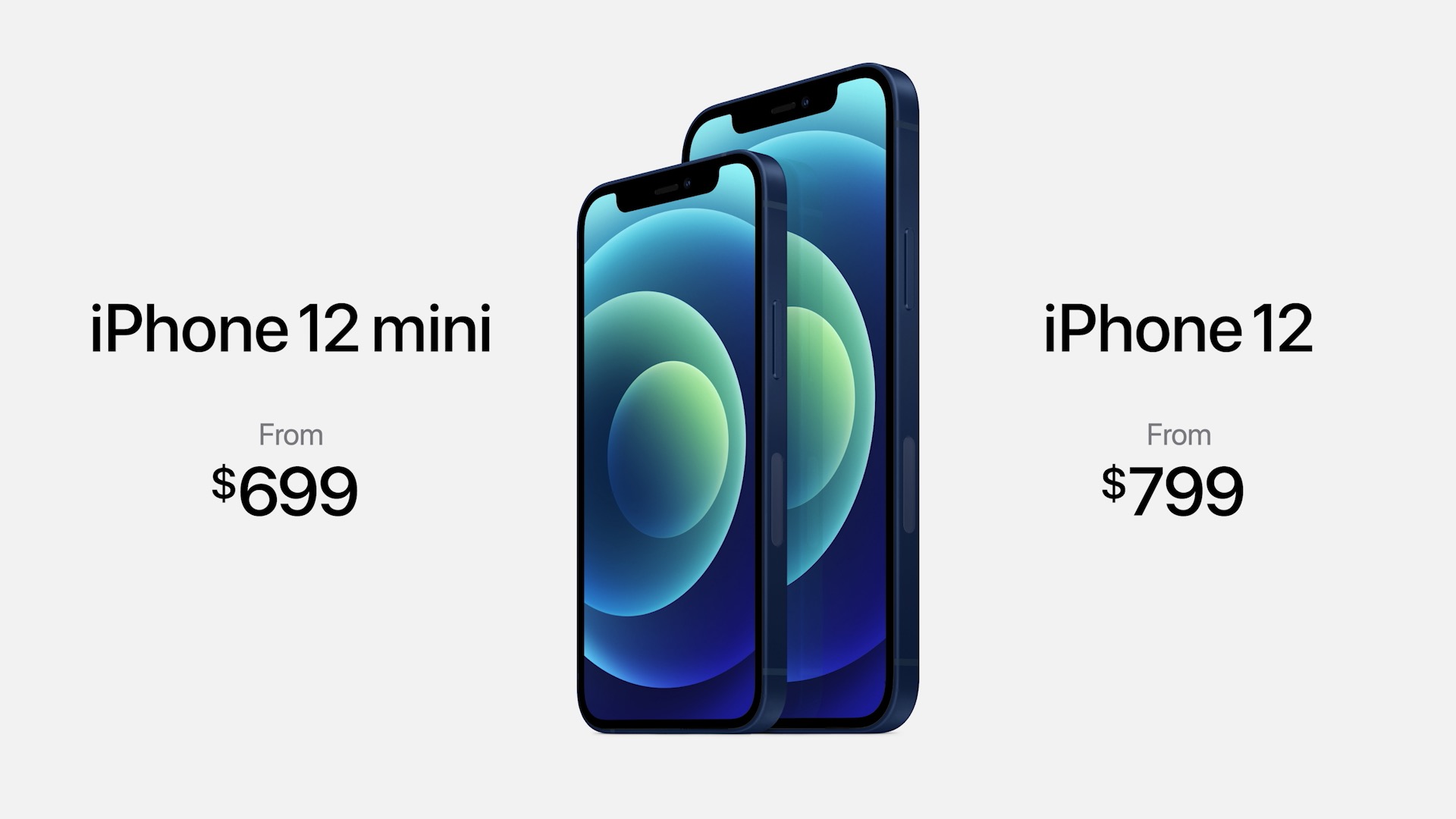
The 5.4-inch iPhone 12 mini and 6.1-inch iPhone 12 mini will be starting at $699 and $799, respectively for the 64GB versions, although Apple added that Verizon will have a special financing offer available where anybody trading in an iPhone X or newer can get the iPhone 12 for $15/month for 24 months, or the iPhone 12 mini for $12/month over the same period.
Despite rumours that both iPhones would be released right away, with the "Pro" models being delayed, it is in fact the iPhone 12 mini that won't be available until November. You'll be able to pre-order the 6.1-inch iPhone 12 this Friday, October 16th, with in-store availability next Friday, October 23rd. The iPhone 12 mini won't be up for pre-order until November 6th, and will be arriving on November 13th.
